Welcome: Pulling a Swift One
Price as tested: $165,797 This month: 442km @ 16.2L/100km
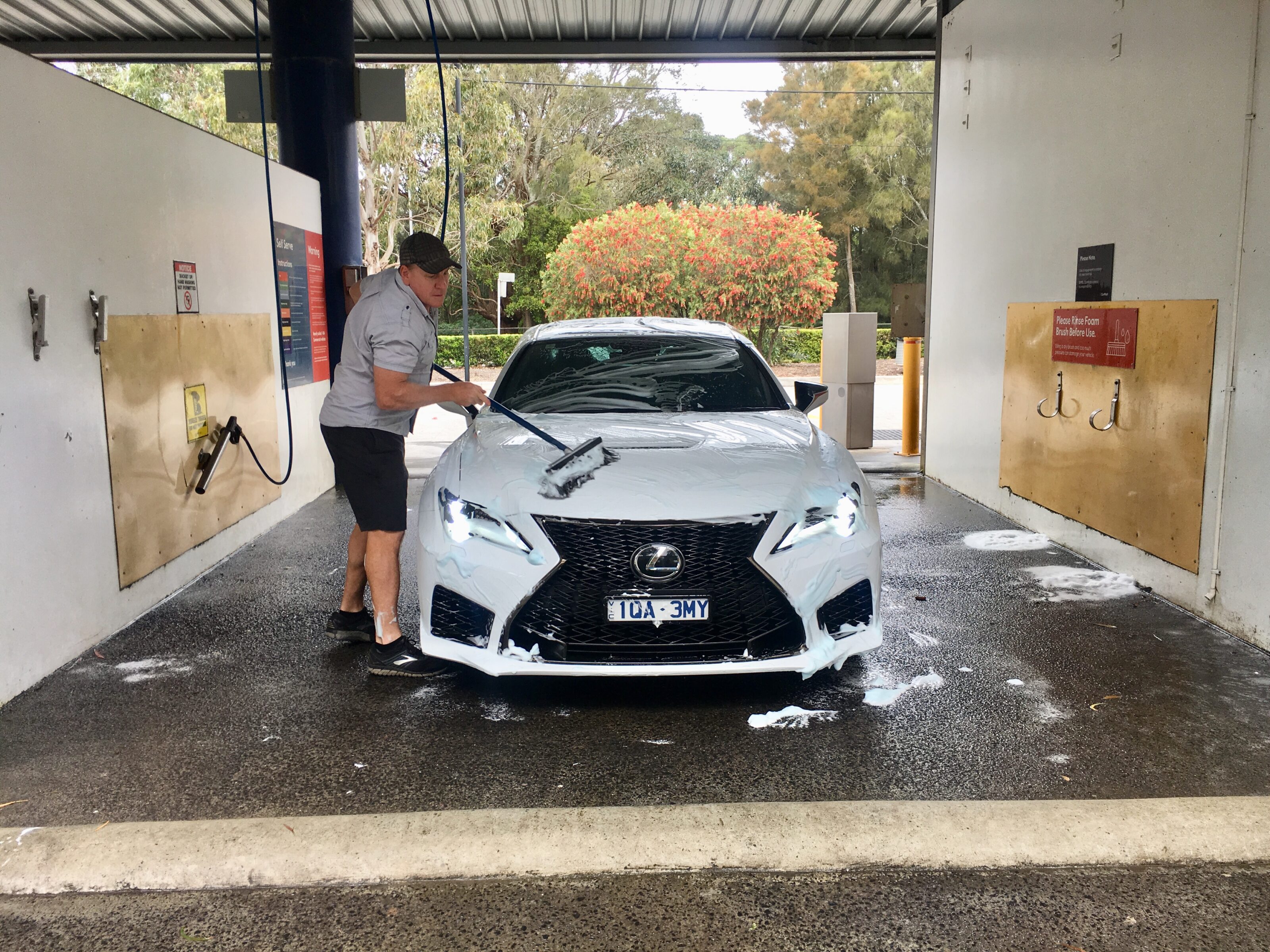
If cars really are a reflection of our personalities and socio-economic standing, I feel as though I’ve gone from being a portly middle-aged financial planner who likes golf and Grange, to a brash, 30-something tech whiz who’s into hip-hop, pole positions and pole dancers.
That’s a snap-shot of the difference between my outgoing Lexus RX450 hybrid seven-seater, and this, the RC-F which replaces it. The two represent pretty much the polar opposites of Lexus’s local range in terms of intended function, packaging, and the rate at which they drink dinosaur juice.
About the only thing they share, apart from that pervasive sense of Lexus quality, is that they are both long-serving inclusions in the brand’s line-up, and are in the latter phases of their respective lifecycles.
The RC-F, packing the 351kW /530Nm atmo 5.0-litre V8 also used in the LC and GS models, is the most sports-focused car Lexus builds. Which means it finds itself facing some stiff competition from the Germans, namely the Merc-AMG C63 S coupe, BMW M4 Competition, and Audi RS5 all straddling a similar price bracket of between $156K–$171K. Then there’s the four-door Alfa Giulia QV, or potential buyers could be casting an eye over a Tesla Model 3, for a different but even faster driving experience.
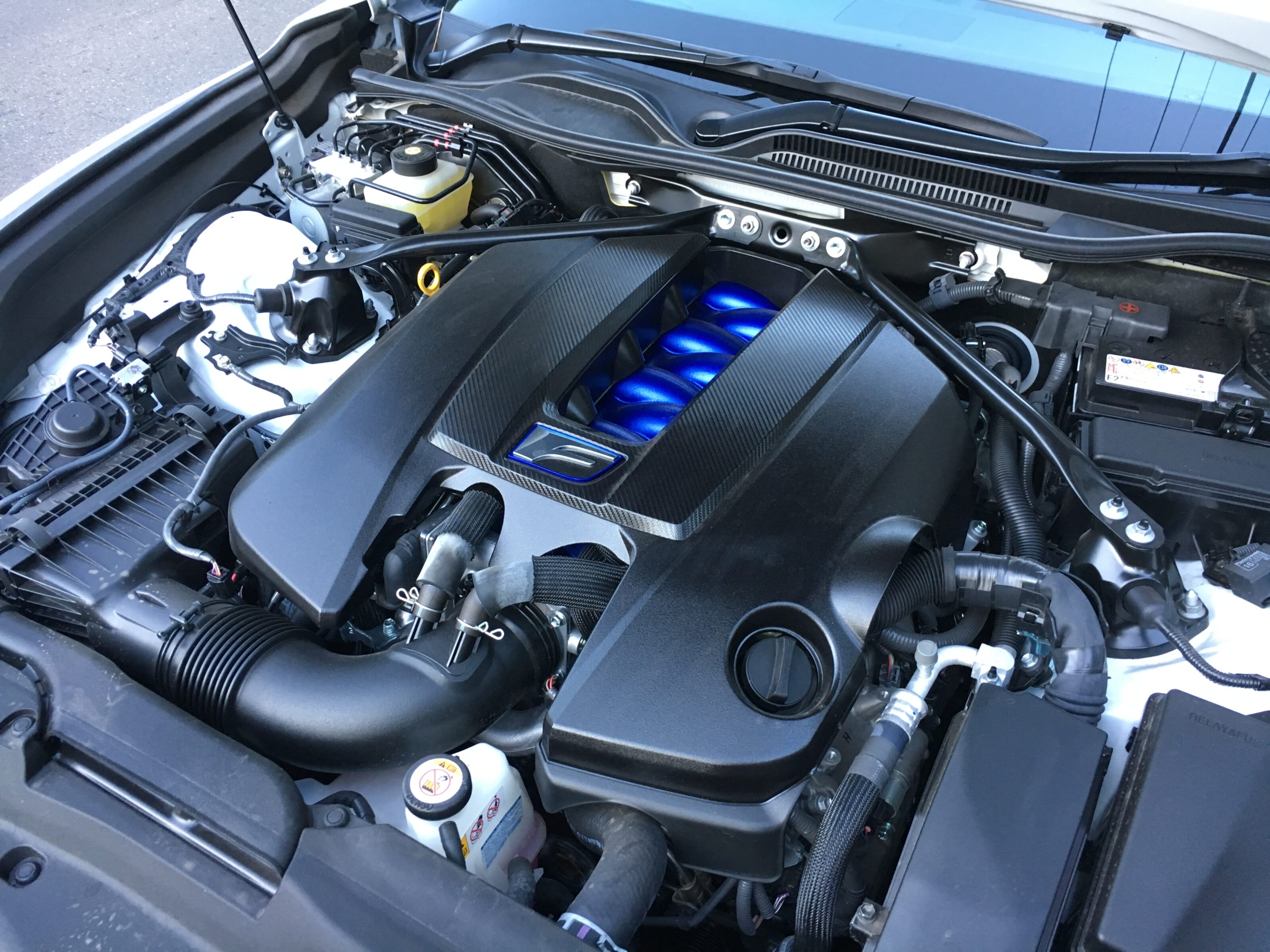
Part of the push to keep the RC-F invigorated is a raft of mechanical upgrades I’ll detail next month, as well as the availability of the snappily named EP3 package, a bundle of options that add a hefy $29,161 to the new base price of $136,636. Key among these are carbon-ceramic brakes (saving 22kg), forged 19-inch BBS wheels fitted with Michelin Pilot Sport 4 rubber (replacing same-size alloys but saving 3kg), and a titanium exhaust which adds to the lightening program by 6kg. There’s also carbonfibre interior trim, so all very tasty additions – on paper at least. The brakes and exhaust warrant greater dissection, so I’ll come back to those next month. It’s important to also make the distinction between this car with the EP3 options and the $165,482 Track Edition, which is similarly equipped but strips off a few more kilos with a carbonfibre roof, bonnet and fixed rear wing.
My first impression, having jumped straight out of the RX450h is just how much daily practicality gets jettisoned with the transition into the company’s sports coupe. And not just the obvious stuff, like ease of entry and egress into a low car with long doors. The rear seats don’t fold (only a small ski port allows broom collectors to indulge their passion…) while inside, the door pockets are too small for anything bar the wallet of a homeless bloke. And once the two cupholders are filled, there’s nowhere to put the key other than inside the centre console box. And unlike the large touchscreen fitted to the RX, the RC’s can only be controlled by the trackpad, an interface that tends to make me more potty-mouthed than Gordon Ramsay’s heat at the swearing Olympics. Oh, and with the driver’s seat set to accommodate my six-foot frame, there’s precisely zero legroom behind for the tiny rear buckets.
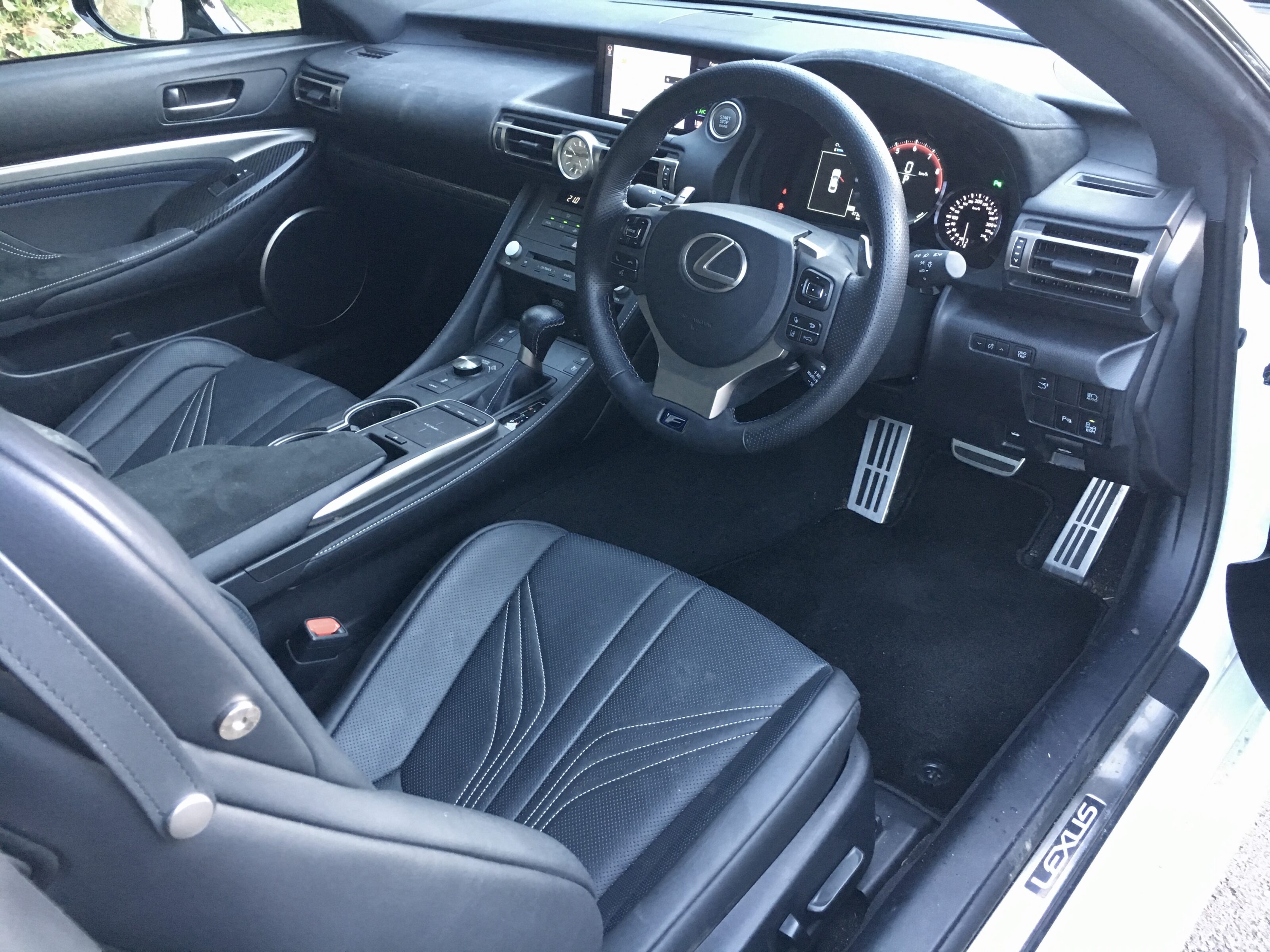
So yes, performance does come at a price more than just fiscal. But stick it in Sport Plus, point it at a twisting, backroad, and those niggles evaporate every bit as quickly as the scenery starts to blur in your outer periphery. It’s properly quick once you ask the V8 to show you everything it has – the 0-100km/h claim is 4.5sec – although the lack of forced induction means you do have to chase big revs to keep it percolating.
My mission, which I stoically accept, is to establish if the driving rewards and engine’s seduction are enough to offset the fact that specced like this, it’s priced almost line-ball with the Track Edition.
Look, I’ve had worse jobs…
Update 1: Picks and Specs
This month: 398km @ 15.9L/100km
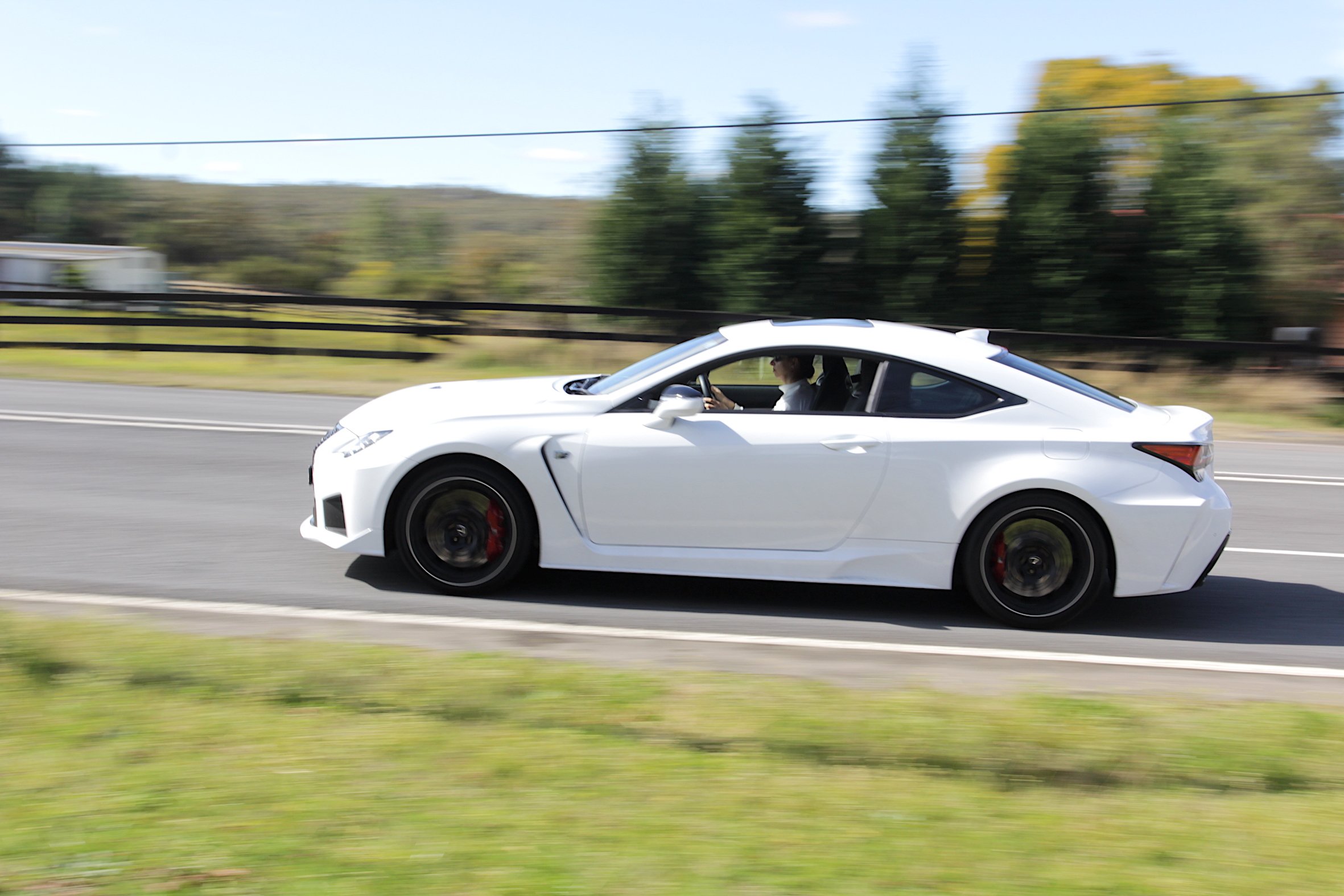
The god of horsepower may be the deity to which us performance enthusiasts kneel, but I still reckon there’s plenty to be said for getting on board with the demons of late braking.
Actually, given how little it takes in a high-performance car to achieve licence-losing velocity, you could mount a case that it’s actually more satisfying and less anti-social to be consistently late, hard and accurate on the anchors when having a bit of crack than it is to be going wide-open throttle at every opportunity.
And when the braking package is anything like the optional set-up fitted to this RC F, it’s pretty much a professional obligation to take full advantage of the massive stopping power on offer. The big carbon-ceramic discs (380mm at both ends) are clamped by six-piston Brembo callipers at the front, with four-piston rears, and bring a hefty reduction of 22kg over the stock steel-disc set-up. The red callipers mean they instantly catch your eye, so each time I walk up to the car, my internal monologue goes all Fat Bastard from Austin Powers with a thick Scottish brogue: “aye, yer dead sexy…”
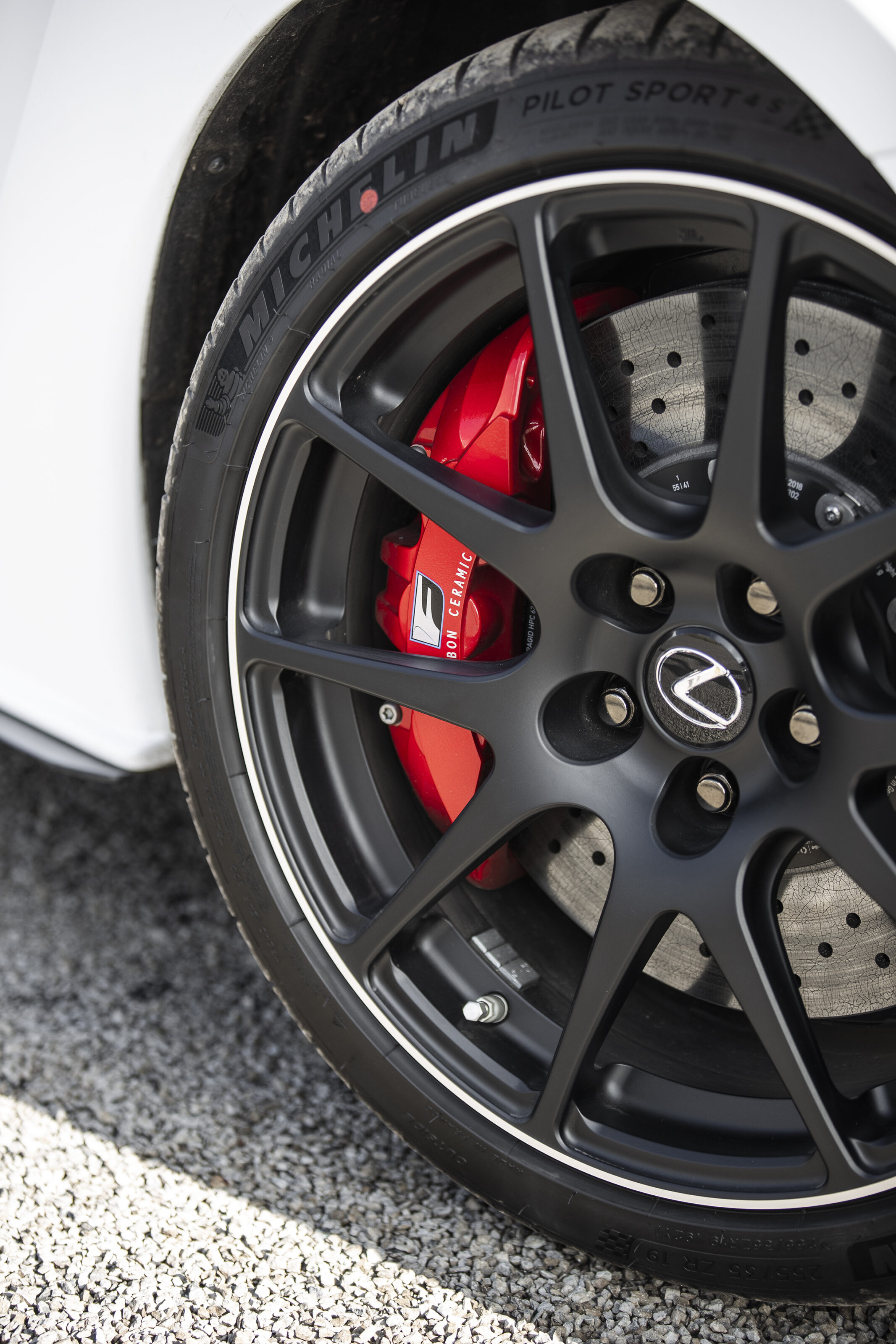
They also come with a hefty price tag. I can’t tell you what they add on their own, because they’re bundled into a pack that includes 19-inch BBS alloys, sunroof, titanium exhaust, and carbonfibre cabin trim for $29,161. But given the wheels and sunroof are available in a lesser package for $5000, we’re talking $24K for brakes, exhaust and trim, so my estimate puts the carbon-ceramics at around $17K. Worth it? Well, they do haul this circa-1750kg coupe from big speeds with phenomenal force and incredible resistance to fade when worked hard. But the pedal calibration in normal around-town driving is bafflingly over-assisted; the merest brush of the pedal pins the nose to the deck and lurches you forward in the seatbelt. Even with plenty of familiarity, I still need to concentrate to not trigger serious over-stopping. And no, it’s not just me: I threw the keys to former Wheels road test editor Nathan Ponchard, making no mention of the brakes from the passenger seat. Sure enough, within a few hundred metres, Ponch was turning us into a pair of nodding dogs, cussing away as I insisted they were fine and he was just a clay-footed fool.
The other inescapable fact is I know from past experience the stock brakes are terrifically strong and fade-resistant in fast road driving, and have a nice, natural-feeling pedal. So unless you’re planning on doing tracks days (really?), trouser the $29K and stick with steel.
Update 2: We’ll Drink to That
This month: 546km @ 15.5L/100km Overall: 1498km @ 15.7L/100km
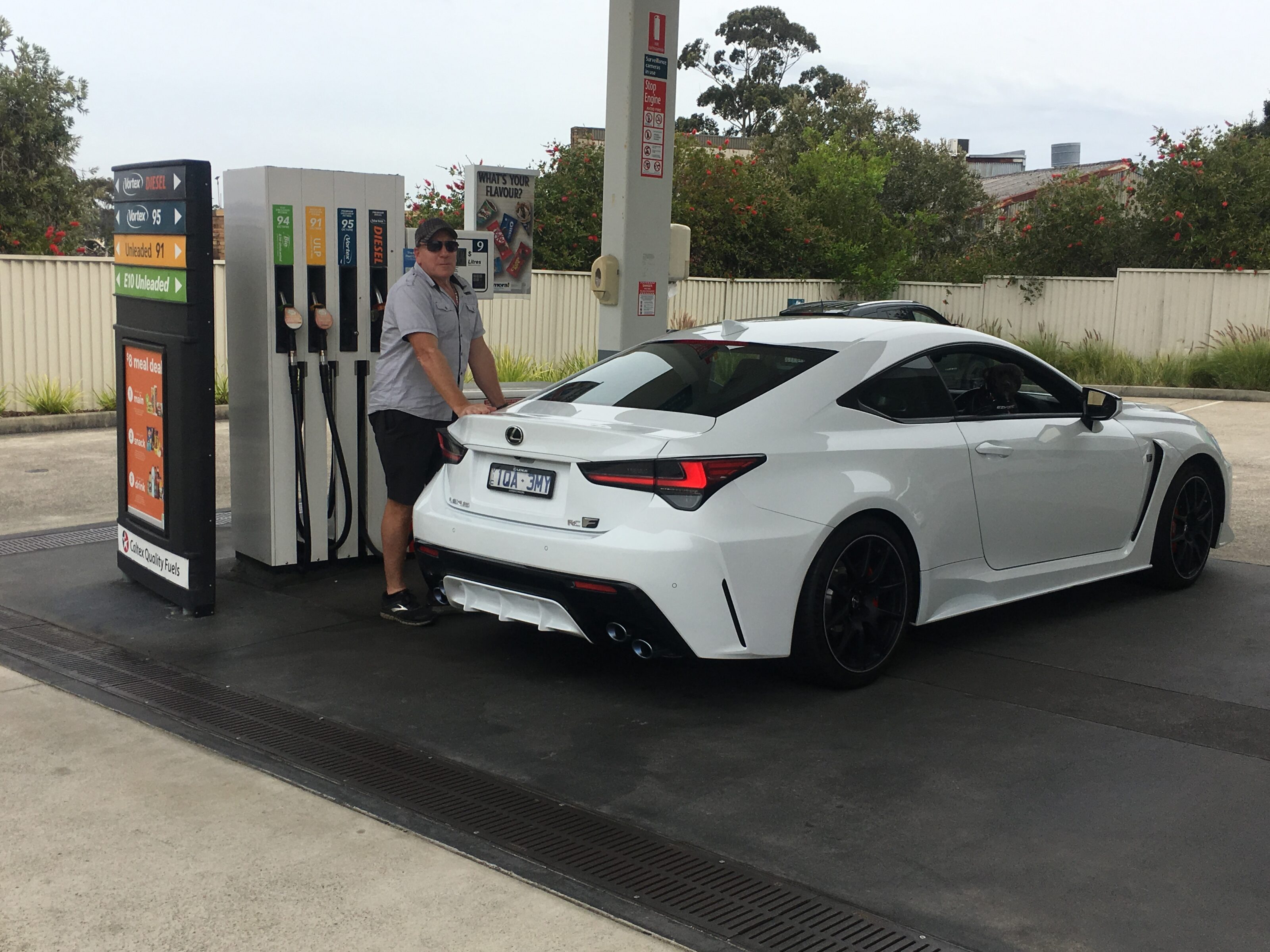
Here’s a top tip you won’t read about in any performance tuning guide or see on a YouTube tutorial. To make your car feel faster and more dynamic, just spend time in something a bit rubbish.
Okay, that’s deeply uncharitable to the 4×4 utes I’ve been lumbering around in for the last few weeks, but you get the point. Jumping back into the RC F made the Japanese sports coupe feel like a Ferrari 458.
To celebrate, I set the alarm early for a run up the iconic Old Pacific Highway north of Sydney. I would chase motorcyclists and dodge cops in what would likely be my last chance for a proper crack in the car. I wanted to dig further into the various drive modes and, er, probe the dynamic envelope a bit.
Having arrived at the Pie in the Sky cafe, I only need wait a few minutes before a skinny dude in full race leathers emerges, and gives his Yamaha R1 the full right-wrist snap, powerlifting the front end for the run down towards Brooklyn Bridge.
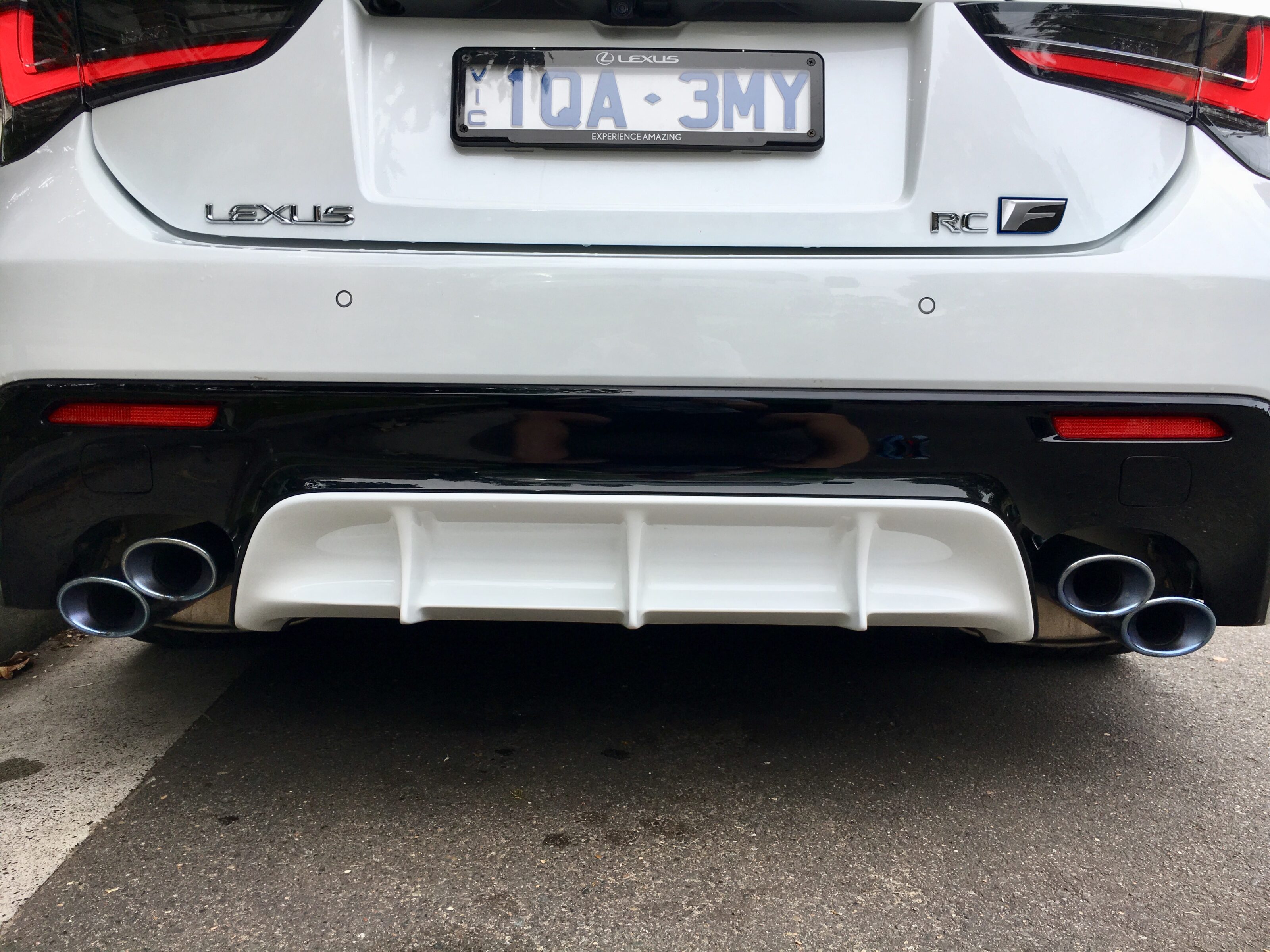
Run, you 14,000rpm wabbit! Booting the RC F off the mark does require a nano-second’s patience for the revs to leap to where the action is; there’s no ignoring that this engine doesn’t have the tyre-frying torque of its force-fed German rivals. But the ratios of the eight-speed auto are sufficiently tightly stacked to allow you to keep it on the boil via the paddles, and the shift speed and overall calibration have benefited from upgrades to the current car.
Steering is not bad, although I’m really not a big fan of the extra weighting that comes when you select Sport Plus. And you do want Sport Plus for the less-restrictive ESC setting, which allows a degree of controlled movement from the rear end, and lets you appreciate the mechanical LSD. Given the proximity of rock walls and Armco as we climb hard up towards Mount White, I elect not to hit the VSC Off button, even though it does retain a small degree of intervention in Sport Plus via the enabling of Expert mode, which, according to the press material, allows “proactive slide control of the vehicle that is suitable for a racetrack environment.”

Old mate on the R1 is getting his knee down like he’s on a qualifier at Phillip Island, but it’s still not hard to stay on his tail thanks to the mid-corner speed I can carry, and his straight-line advantage is easily negated in the braking areas. The over-assisted pedal feel I moaned about last month is less of an issue when pushing on; with plenty of heat and hard applications, it’s actually fine.
Mr R1 eventually pulls off with a respectful nod, and later, as I cruise home, it’s a chance for some final, more fully formed thoughts about this car. On the whole, I think it has a certain Japanese cool to the exterior design, and I like the response and purity of the atmo engine. I never really missed the thuggish slug of low-revs torque an M4 or C63 gives.
But … the road noise on coarse-chip is a real demerit, denting the RC F’s touring attributes. Also, a wholesale rethink of the multimedia interface is long overdue; the trackpad and non-touchscreen feel ancient in an age of hi-res screens with pinch and swipe. As does the lack of front/360-degree camera at this price.
So, lots of performance and driving pleasure, but also a premium price … plus a few unresolved loose ends.








